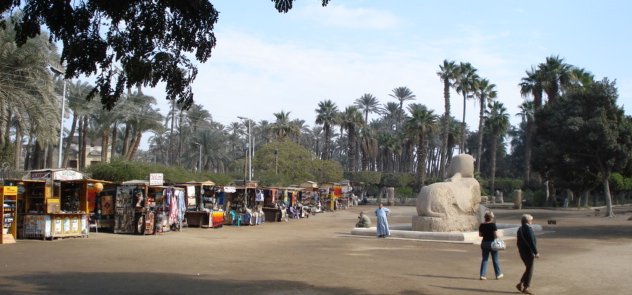
Memphis was the capital of Egypt for hundreds of years. Today there is nothing but palms trees and a big monument area in the nearby desert. This is Saqqara. In some ways it is more interesting than the pyramids at Giza. The first pyramids are here. At first they are just a pile of rubble, but then you get a step pyramid (pyramid of Djoser) that is the precursor of the pyramids we all know.
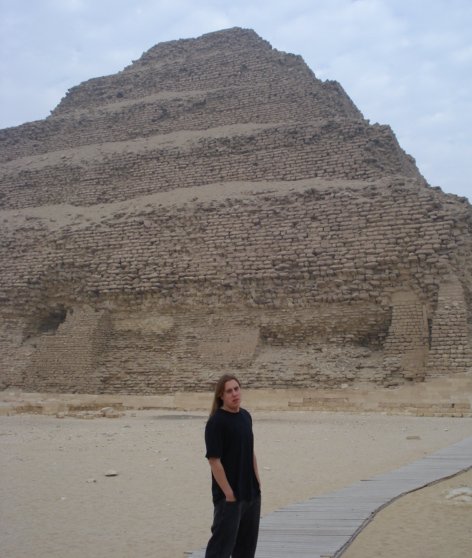
We got to Saqqara early enough to avoid the crowds. In fact, we were just about a half hour ahead of a bus caravan of Germans. They were hot on our heels throughout the area. Going in tour groups has some advantages. You get some lecture by the guide and the numbers help dilute the effect of the ubiquitous pseudo guides who show you how to get into a monument or point you to the clearly marked path and then want money.
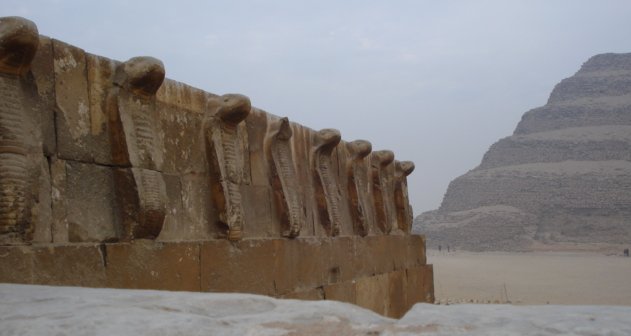
I do not believe that the average guide furnishes accurate information. Just listening to those around me I heard all sorts of conflicting stories. The guides’ main goal is to make the listeners happy so that he will get a bigger tip, so he tailors history to suite what he thinks the audiences wants to hear or a narrative that is easier to tell. I am not sure it really matters very much anyway. I cannot believe I just wrote that. Those who know me know that I am very particular about historical accuracy, but in this case the person is going to remember only that he saw something very old. The details will be buried in the sands of time, shrouded in the mist of antiquity or lost like a drunk’s car keys on a dark night, depending on the metaphor you like best. This is tourism, not scholarship.
After Saqqara we went to the probable site of Memphis. Layers of mud had covered the place, but they still sometimes dig out interesting things. There was a giant stature of Ramesses laying on the ground and they built a viewing area around it Ramesses was evidently the vainest man in world history. He wrote his name on everything, including the statues of previous pharaohs, but this was supposedly really him. We got to Memphis a few minutes ahead of the Germans, but that is about all the time it took to see the place.
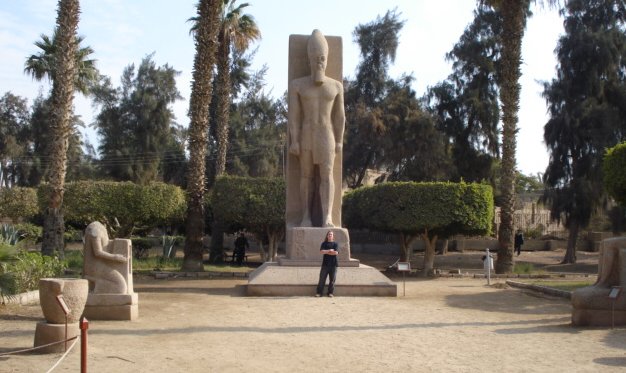
Our driver took us to a carpet “museum”, i.e. a place where they show you an exhibit of carpet making for a minute and then try to sell you carpets for the next hour. Drivers get a kickback and I don’t begrudge them this. We went to a papyrus museum yesterday, same thing. And they tried to draw us into a perfume factory. We were immune to these enticements, however, having already been already fleeced at papyrus and perfume museums near the Egyptian museum.
For me the most interesting part of the day was a visit to the Coptic area. Copts still make up about 10% of the population. The churches are reminiscent of the Romans & Byzantines. I like that history. According to the narrative at the museums, Egypt has more relics of early Christianity than anyplace else because the climate preserves them. Besides, Egypt was a center of early Christianity. It is interesting to see how Islam so obliterated Christianity in all but a few pockets in what really was its homeland in Egypt, Syria, Asia Minor and of course the Holy Land itself.
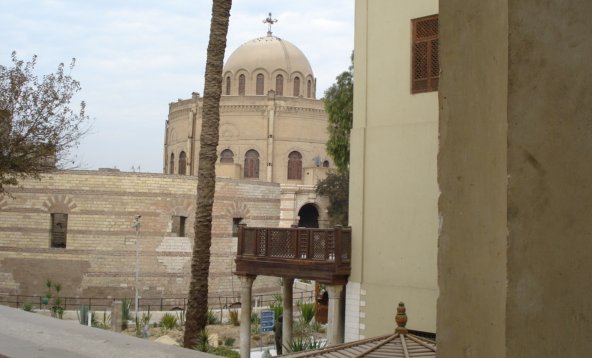
We wanted to go to a nearby restaurant, but the driver told us that we would get food poisoning if we even walked in. He took us to an authentic tourist buffet restaurant. Those Germans who, had been just behind us all day, were now in front and already sitting at the restaurant. We had the Egyptian meal auf deutsch.
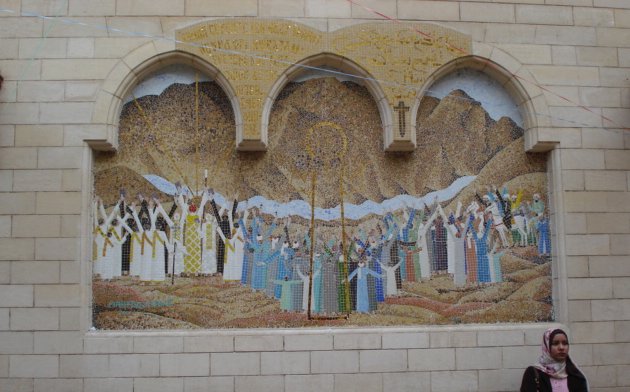
It was a busy day. Back at the Marriott we went to the restaurant that called itself Egyptians and called ourselves content. Then a strange thing happened. It rained. People are accustomed to water flowing in the river and are a little surprised to see it falling from the sky. The waiters were all exercised & talking about it. After living in Al Anbar for a couple of months, I understand.I will post pictures of all the things above when I get back to Al Asad.
